Ditapis dengan

A mixed-integer programming model for global logistics transportation problems
In today’s highly competitive global environment, companies are forced to compete on price and delivery speed. Global logistics transportation presents some special challenges and issues for business organizations, and these issues differ from those posed by domestic logistics transportation. This study considers road transportation problems between two countries. A mixed-integer programming …
- Edisi
- Vol. 39, No. 3, March 2008, 217–228
- ISBN/ISSN
- 0020–7721
- Deskripsi Fisik
- 13 p.
- Judul Seri
- International Journal of Systems Science
- No. Panggil
- ATC LO WUY a

A framework of supply chain orientation
The concept of supply chain orientation (SCO) has been described in multiple ways in previous research. The purpose of this paper is to integrate previous descriptions and further develop the structural element of SCO including the areas of organizational design, human resources, information technology, and organizational measurement.
- Edisi
- Vol. 21 No. 2, 2010 pp. 161-179
- ISBN/ISSN
- 0957-4093
- Deskripsi Fisik
- 22 p.
- Judul Seri
- The International Journal of Logistics Management
- No. Panggil
- ATC LO ESP a

A framework for the alignment of new product development and supply chains
The purpose of this paper is to develop a framework that explains how new product development and supply chain variables are related to one another and how they affect performance.
- Edisi
- -
- ISBN/ISSN
- -
- Deskripsi Fisik
- 17 p.
- Judul Seri
- Supply Chain Management: An International Journal
- No. Panggil
- ATC LO SIA a

A bottleneck analysis in the IFRC supply chain
The purpose of this paper is to further the understanding of bottlenecks occurring when preparing for humanitarian operations in the humanitarian supply chain. The focus in this paper is set on the activities of aid supply procurement and aid consolidation into standardised deliveries of humanitarian aid.
- Edisi
- Vol. 4 No. 2, 2014 pp. 222-244
- ISBN/ISSN
- 2042-6747
- Deskripsi Fisik
- 25 p.
- Judul Seri
- Journal of Humanitarian Logistics and Supply Chain Management
- No. Panggil
- ATC LO BUD a

A conceptual model for evaluating the financial impact of supply chain manage…
The purpose of this paper is to review the literature concerning supply chain management technology (SCMT) and financial performance, and to present a model for evaluating the financialperformance benefits of investments in supply chain management technologies. The literature review and the associated model also lead to a discussion of opportunities for future research in the area
- Edisi
- Alan Blankley
- ISBN/ISSN
- -
- Deskripsi Fisik
- 30 p.
- Judul Seri
- The International Journal of Logistics Management
- No. Panggil
- ATC LO BLA a

A 3-R principle for characterizing failure in relief supply chains’ respons…
The purpose of this paper is to introduce a 3R (right time, right place, and right material) principle for characterizing failure in humanitarian/relief supply chains’ response to natural disasters, and describes a Bayesian methodology of the failure odds with regard to external factors that may affect the disaster-relief outcome, and distinctive supply chain proneness to failure.
- Edisi
- Vol. 5 No. 2, 2015 pp. 234-252
- ISBN/ISSN
- 2042-6747
- Deskripsi Fisik
- 21 P.
- Judul Seri
- Journal of Humanitarian Logistics and Supply Chain Management
- No. Panggil
- ATC LO ANT a

3PL practices : an Indian perspective
To carry out a comprehensive survey on 3PL practices in India and to establish the impact of usage of third party logistics services on business results
- Edisi
- Vol. 36 No. 9, 2006 pp. 666-689
- ISBN/ISSN
- 0960-0035
- Deskripsi Fisik
- 27 p.
- Judul Seri
- International Journal of Physical Distribution & Logistics Management
- No. Panggil
- ATC LO SAH 3

3C framework for modular supply networks in the Chinese automotive industry
The purpose of this paper is aimed at understanding and identifying the context, capability requirements, and configurations (3Cs) of modular supply networks in the Chinese automotive industry.
- Edisi
- Vol. 20 No. 3, 2009 pp. 322-341
- ISBN/ISSN
- 0957-4093
- Deskripsi Fisik
- 22 p.
- Judul Seri
- The International Journal of Logistics Management
- No. Panggil
- ATC LO LIN 3

A conceptual model for quality of service in the supply chain
The objective of this paper is to propose a model for assessing the quality of service at various interfaces of supply chain using third party logistics.
- Edisi
- Vol. 36 No. 7, 2006
- ISBN/ISSN
- -
- Deskripsi Fisik
- 32 p.
- Judul Seri
- International Journal of Physical Distribution & Logistics Management
- No. Panggil
- ATC LO VRA a

A collaborative supply chain management system for a maritime port logistics …
In this article we propose a collaborative logistics framework for a Port Logistics Chain (PLC) based on the principles of Supply Chain Management (SCM) that rely on stakeholders integration and collaboration, providing a reference model for the inland coordination of the PLC. A comprehensive literature review was conducted, analyzing several cases in which SCM practices have been implemented a…
- Edisi
- Vol.12, June 2014
- ISBN/ISSN
- -
- Deskripsi Fisik
- 15 p.
- Judul Seri
- Journal of Applied Research and Technology
- No. Panggil
- ATC LO ASC a

Knowledge and cultural diffusion along the supply chain as drivers of product…
The purpose of this paper is to widen the knowledge base on supply chain learning by exploring and explaining how an enterprise can compete and win in the international market by integrating quality management practices along its supply chain and, above all, by becoming the coordinator in a supply chain learning (SCL) network.
- Edisi
- Vol. 23 No. 2, 2012
- ISBN/ISSN
- -
- Deskripsi Fisik
- 29 p.
- Judul Seri
- -
- No. Panggil
- ATC MG BIO k

Knowledge and cultural diffusion along the supply chain as drivers of product…
The purpose of this paper is to widen the knowledge base on supply chain learning by exploring and explaining how an enterprise can compete and win in the international market by integrating quality management practices along its supply chain and, above all, by becoming the coordinator in a supply chain learning (SCL) network.
- Edisi
- Vol. 23 No. 2, 2012
- ISBN/ISSN
- -
- Deskripsi Fisik
- 29 p.
- Judul Seri
- The International Journal of Logistics Management
- No. Panggil
- ATC LO NON k

Contribution of RFID technology to better management of fashion supply chains
The purpose of this paper is to explore the deployment of RFID technology in fashion supply chain management (FSCM). It highlights the contribution of RFID to FSCM, supporting faster logistics activities, with greater products quality, cheaper and with more responsiveness, improving customer satisfaction
- Edisi
- Vol. 40 No. 2, 2012
- ISBN/ISSN
- -
- Deskripsi Fisik
- 31 p.
- Judul Seri
- International Journal of Retail & Distribution Management
- No. Panggil
- ATC MG CAR c

How supply chain oriented is the port sector?
- Edisi
- -
- ISBN/ISSN
- 0925-5273
- Deskripsi Fisik
- 14 p.
- Judul Seri
- Int. J.ProductionEconomics
- No. Panggil
- ATC PO TON h
- Edisi
- -
- ISBN/ISSN
- 0925-5273
- Deskripsi Fisik
- 14 p.
- Judul Seri
- Int. J.ProductionEconomics
- No. Panggil
- ATC PO TON h

Greenhouse gas emissions from ships in ports – case studies in four continents
Emissions of GHG from the transport sector and how to reduce them are major challenges for policy makers. The purpose of this paper is to analyse the level of greenhouse gas (GHG) emissions from ships while in port based on annual data from Port of Gothenburg, Port of Long Beach, Port of Osaka and Sydney Ports. Port call statistics including IMO number, ship name, berth number and time spent at…
- Edisi
- -
- ISBN/ISSN
- 1361-9209
- Deskripsi Fisik
- 13 p.
- Judul Seri
- Transportation Research Part D
- No. Panggil
- ATC PO STY g
Advances in Maritime Logistics and Supply Chain Systems
Over the recent years, maritime logistics and supply chains have witnessed tremendous growth rates around the world, notwithstanding the recent economic downturn. Maritime transportation accounts for the majority of international trade and it has become a vital factor for the economic health of many nations. In emrging economies, more new ports have also been developed to tap into the global ma…
- Edisi
- -
- ISBN/ISSN
- 978-981-4329-85-9
- Deskripsi Fisik
- xiii, 213p
- Judul Seri
- -
- No. Panggil
- TXT LO CHE a
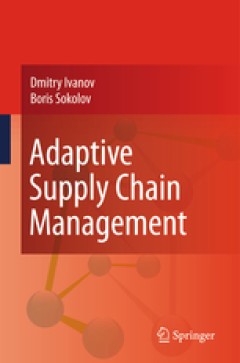
Adaptive Supply Chain Management
The term “supply chain management” (SCM) was coined in the 1980–90s. Presently, SCM is considered as the most popular strategy for improving organizational competitiveness along the entire value chain in the twenty-first century. A supply chain (SC) is a network of organizations, flows and processes wherein a number of various enterprises (suppliers, manufacturers, distributors and retai…
- Edisi
- -
- ISBN/ISSN
- 978-1-84882-951-0
- Deskripsi Fisik
- xxxi, 267p
- Judul Seri
- -
- No. Panggil
- TXT LO IVA a
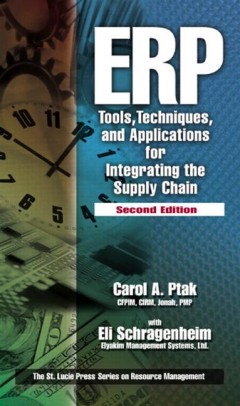
ERP tools, techniques, and applications for Integrating the supply chain
Enterprise Resource Planning (ERP) has been successful in many companies and yet many others have struggled with their efforts. If companies would read this book before beginning their journey toward ERP there would be more success stories. This book is very comprehensive in its coverage of ERP and related topics. There is a chapter on the Theory of Constraints (TOC) and it is the first ERP boo…
- Edisi
- 2nd
- ISBN/ISSN
- 1-57444-358-5
- Deskripsi Fisik
- 414
- Judul Seri
- -
- No. Panggil
- TXT LO PTA e
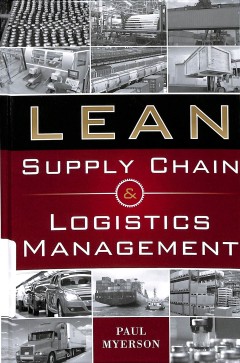
Lean supply chain and logistics management
This practical guide reveals how to identify and eliminate waste in your organization's supply chain and logistics function. Lean supply chain and logistics management provides explanations of both basic and advanced Lean tools, as well as specific Lean implementation opportunities. The book then describes a Lean implementation methodology with critical success factors. Real world examples and …
- Edisi
- -
- ISBN/ISSN
- 978-0-07-176626-5
- Deskripsi Fisik
- xviii, 270 p.; 21 cm.
- Judul Seri
- -
- No. Panggil
- TXT LO MYE l

A new approach to port choice modelling
- Edisi
- -
- ISBN/ISSN
- -
- Deskripsi Fisik
- 26 p.
- Judul Seri
- -
- No. Panggil
- ATC PO MAG a
- Edisi
- -
- ISBN/ISSN
- -
- Deskripsi Fisik
- 26 p.
- Judul Seri
- -
- No. Panggil
- ATC PO MAG a

“Smart Parts” Supply Networks as Complex Adaptive Systems: Analysis and I…
Purpose – The purpose of this paper is to critically analyze whether supply networks may be validly treated as complex adaptive systems (CAS). Finding this to be true, the paper turns into the latest concerns of complexity science like Pareto distributions to explain well-known phenomena of extreme events in logistics, like the bullwhip effect. It aims to introduce a possible solution to h…
- Edisi
- Vol. 38 Iss 2 pp
- ISBN/ISSN
- /0960-0035
- Deskripsi Fisik
- 2008
- Judul Seri
- International Journal of Physical Distribution & Logistics Management
- No. Panggil
- ATC LO WYC s

Logistics Education: A Look At The Current State Of The Art and Science
Purpose – This paper aims to provide the results of a large-scale survey of courses dedicated to the field of logistics in higher education. This research is unique because it represents the first large-scale study of both undergraduate and graduate logistics courses. Design/methodology/approach – Content analysis was performed on each syllabus to identify the actual course coverage: requ…
- Edisi
- -
- ISBN/ISSN
- 1359-8546
- Deskripsi Fisik
- 15 p
- Judul Seri
- Supply Chain Management: An International Journal
- No. Panggil
- ATC LO LUT l

National-Level Logistics Costs: An Overview of Extant Research
No comprehensive review of macro-logistics cost research is currently available. Thus the aim of this paper is to elucidate where logistics cost research is conducted, to identify research methods, and to present the logistics costs in identified extant research. Altogether 66 textbooks, scientific journals, case studies, and other studies were reviewed. The three dominant methodological app…
- Edisi
- Vol. 18, No. 4
- ISBN/ISSN
- 1469-848X
- Deskripsi Fisik
- 13 p
- Judul Seri
- International Journal of Logistics Research and Applications: A Leading Journal of Supply Chain Management
- No. Panggil
- ATC LO RAN n

Pengembangan Sistem Logistik yang Efisien dan Efektif dengan Pendekatan Suppl…
- Edisi
- -
- ISBN/ISSN
- -
- Deskripsi Fisik
- 8 p
- Judul Seri
- -
- No. Panggil
- ATC LO DED p
- Edisi
- -
- ISBN/ISSN
- -
- Deskripsi Fisik
- 8 p
- Judul Seri
- -
- No. Panggil
- ATC LO DED p

Advocacy to Promote Logistics in Humanitarian Aid
Purpose – This paper aims to examine some of the more effective means of advocacy focused on promoting the unique role of logistics in the delivery of much needed humanitarian aid, and outlines some of the challenges as experienced in the outcomes of recent disasters such as the Indian Ocean Tsunami 2004. Design/methodology/approach – The paper draws from the limited literature availabl…
- Edisi
- Vol. 32 Iss 11 pp.
- ISBN/ISSN
- 0140-9174
- Deskripsi Fisik
- 11 p
- Judul Seri
- Management Research News
- No. Panggil
- ATC LO WHI a

A Taxonomy For Selecting Global Supply Chain Strategies
Purpose – The purpose of this paper is to address the increasingly important question of supply chain design for global operations. With the rise of off-shore sourcing and the simultaneous need for improved responsiveness to customer demand, the choice of supply chain strategy is critical. Design/methodology/approach – The paper draws its conclusions from case-based research supported b…
- Edisi
- Vol. 17 Iss 2 pp
- ISBN/ISSN
- 0957-4093
- Deskripsi Fisik
- 18 p
- Judul Seri
- The International Journal of Logistics Management
- No. Panggil
- ATC LO CHR a

The Journal Of Humanitarian Logistics and Supply Chain Management: First Refl…
Purpose – The purpose of this paper is to reflect on the editorial operations underpinning the Journal of Humanitarian Logistics and Supply Chain Management in light of the review process and the quality of articles. It further outlines the articles in the special issue and relates them to the scope of the journal. Design/methodology/approach – The editorial processes of the journal are…
- Edisi
- Vol. 1 Iss 2 pp.
- ISBN/ISSN
- 2042-6747
- Deskripsi Fisik
- 8 p
- Judul Seri
- Journal of Humanitarian Logistics and Supply Chain Management
- No. Panggil
- ATC LO KOV t

Logistics and Supply Chain Education and Jobs: A Study of UK Markets
Purpose – The purpose of this paper is to examine the curriculum design of logistics and supply chain management (LSCM) undergraduate courses offered by selected UK higher education (HE) institutions and compares them with employers’ job requirements in the UK. Design/methodology/approach – Desk-based research involving content analysis of 22 selected undergraduate LSCM courses from 1…
- Edisi
- Vol. 25 Iss 3 pp
- ISBN/ISSN
- 0957-4093
- Deskripsi Fisik
- 2014
- Judul Seri
- The International Journal of Logistics Management
- No. Panggil
- ATC LO WON l

Information Sharing In Supply Chains, Myth Or Reality? A Critical Analysis of…
Purpose – The purpose of this paper is to investigate what empirical evidence exists regarding benefits of information sharing in supply chains, and to identify potential gaps and opportunities in this research area. Design/methodology/approach – The authors conducted an in-depth, systematic literature review and multilevel analysis of 82 selected articles. In the analysis, the authors …
- Edisi
- Vol. 44 Iss 3 pp
- ISBN/ISSN
- 0960-0035
- Deskripsi Fisik
- 24 p
- Judul Seri
- International Journal of Physical Distribution & Logistics Management
- No. Panggil
- ATC LO KEM i
E-supply chain technologies and management
Today’s managers are turning to the functions of the supply chain to improve margins and gain competitive advantage. The explosion of the Internet and other e-business technologies has made real-time, online communication throughout the entire supply chain a reality. Electronic supply chain management (eSCM) is a reference to the supply chain that is structured via electronic technology-enabl…
- Edisi
- -
- ISBN/ISSN
- 978-1-59904-257-2
- Deskripsi Fisik
- xiv, 288 p.
- Judul Seri
- -
- No. Panggil
- TXT LO ESU z

Logistics Performance Measurement in The Supply Chain: A Benchmark
Purpose – The purpose of this paper is to describe the state of logistics performance measurement in corporations based in the USA. Design/methodology/approach – A triangulation approach is used, including, a Delphi study involving more than 100 practitioners, academics, and consultants identified as logistics experts; personal interviews conducted with 55 executives of 20 firms identif…
- Edisi
- Vol. 16 Iss 6 pp
- ISBN/ISSN
- 1463-5771
- Deskripsi Fisik
- 16 p
- Judul Seri
- Benchmarking: An International Journal
- No. Panggil
- ATC LO KEE l

Logistics Management and Supply Chain Management: A Critical Evaluation
The purpose of this research is to identify the content of Logistics Management and Supply Chain Management, as perceived by course instructors and textbook content, and identify the core subjects of the discipline. The study is based on review and content analysis of two samples; 30 syllabi used for teaching a basic course, and 10 textbooks that are dedicated to the discipline. A list of be…
- Edisi
- Vol. 3, No. 2
- ISBN/ISSN
- -
- Deskripsi Fisik
- 7 p
- Judul Seri
- International Journal of Business and Economics Research
- No. Panggil
- ATC LO GLO l

Logistic Service Measurement: a Reference Framework
- Edisi
- Vol. 15 Iss 3 pp.
- ISBN/ISSN
- 1741-038X
- Deskripsi Fisik
- 14 p
- Judul Seri
- Journal of Manufacturing Technology Management
- No. Panggil
- ATC LO RAF l
- Edisi
- Vol. 15 Iss 3 pp.
- ISBN/ISSN
- 1741-038X
- Deskripsi Fisik
- 14 p
- Judul Seri
- Journal of Manufacturing Technology Management
- No. Panggil
- ATC LO RAF l

A Decision-Making Model For Reverse Logistics In The Computer Industry
Purpose – This paper seeks to present a decision-making model for manufacturers to maximize their profits in reverse logistics operations. Design/methodology/approach – A system dynamic model has been developed to complement with prior models and is validated using data collected from a computer company manufacturer handling returns with volumes transacted over a period of two years. F…
- Edisi
- Vol. 17 Iss 3 pp
- ISBN/ISSN
- 0957-4093
- Deskripsi Fisik
- 27 p
- Judul Seri
- The International Journal of Logistics Management
- No. Panggil
- ATC LO TAN a

A Conceptual Framework of Vulnerability In Firms’ Inbound and Outbound Logi…
- Edisi
- Vol. 32 Iss 2 pp
- ISBN/ISSN
- 0960-0035
- Deskripsi Fisik
- 29 p
- Judul Seri
- International Journal of Physical Distribution & Logistics Management
- No. Panggil
- ATC LO SVE a
- Edisi
- Vol. 32 Iss 2 pp
- ISBN/ISSN
- 0960-0035
- Deskripsi Fisik
- 29 p
- Judul Seri
- International Journal of Physical Distribution & Logistics Management
- No. Panggil
- ATC LO SVE a

A Conceptual Framework For The Analysis Of Vulnerability in Supply Chains
- Edisi
- Vol. 30 Iss 9 pp
- ISBN/ISSN
- 0960-0035
- Deskripsi Fisik
- 27 p
- Judul Seri
- International Journal of Physical Distribution & Logistics Management
- No. Panggil
- ATC LO SVE a
- Edisi
- Vol. 30 Iss 9 pp
- ISBN/ISSN
- 0960-0035
- Deskripsi Fisik
- 27 p
- Judul Seri
- International Journal of Physical Distribution & Logistics Management
- No. Panggil
- ATC LO SVE a
Planning and scheduling for maritime container yards supporting and facilitat…
This book contains six chapters that can be used on a self-contained basis as teaching cases in an undergraduate or specialist class setting on OR techniques applied to maritime container operations or for port operations. Instructors and students can look forward to an insightful presentation of the challenges facing the maritime supply chains and container port logistics service providers in …
- Edisi
- -
- ISBN/ISSN
- 978-3-319-17024-4
- Deskripsi Fisik
- ix, 109p
- Judul Seri
- -
- No. Panggil
- TXT LO LIW p
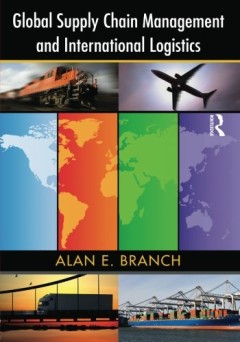
Global supply chain management and international logistics
During the past 10 years, globalisation of trade has accelerated and in consequence the international environment in which we do business has changed dramatically. It is therefore not surprising that I have received numerous requests from both business executives and academics across the world to write a book on global supply chain management and international logistics and thereby fill a gap i…
- Edisi
- -
- ISBN/ISSN
- 0-203-88776-X
- Deskripsi Fisik
- xii, 167 p., ; index
- Judul Seri
- -
- No. Panggil
- TXT LO BRA g
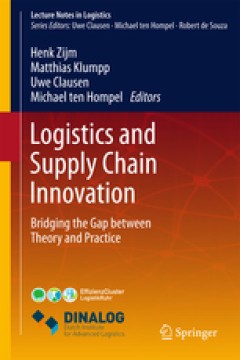
Logistics and supply chain innovation
In today’s global economies, logistics has been recognized as one of the key factors that determine the competitive position of both individual corporations and industry-based networks. At the same time, the very nature of supply chains and supply networks is changing rapidly, as a result of both technological and social developments. These developments include advances in ICT and industrial …
- Edisi
- -
- ISBN/ISSN
- 2194-8917
- Deskripsi Fisik
- 413p
- Judul Seri
- -
- No. Panggil
- TXT LO ZIJ l
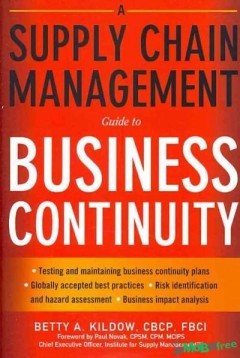
A Supply Chain management guide to business continuity
RISK MANAGEMENT, in the cloak of business continuity, must be on the radar screen of every business management team—from “top to bottom.” From planning to documentation, from risk identifi cation to hazard assessment, from global business continuity strategies to the key role of supply management, this book is full of practical, relevant, step- by- step approaches for managing the unknown…
- Edisi
- -
- ISBN/ISSN
- 978- 0- 8144- 1645-
- Deskripsi Fisik
- xiii, 261p
- Judul Seri
- -
- No. Panggil
- TXT LO KID a
Logistics composite modeling
Logistics is the collection of activities associated with acquiring, moving, storing and delivering supply chain commodities (i.e., products in all stages of manufacture, services and information). 1 Logistics encompasses the business functions of transportation, distribution, warehousing, material handling, and inventory management, and interfaces closely with manufacturing and marketing. Lo…
- Edisi
- -
- ISBN/ISSN
- -
- Deskripsi Fisik
- v, 47p
- Judul Seri
- -
- No. Panggil
- TXT LO RAT l

Basic of supply chain management
upply Chain Management (SCM) was once a dream, a concept more than a reality, since there were many necessary components of supply chain management that could not be fully achieved. A key barrier to full supply chain management was the cost of communicating with and coordinating among the many independent suppliers in each supply chain. An entire supply chain stretches from the creation of raw …
- Edisi
- -
- ISBN/ISSN
- -
- Deskripsi Fisik
- 235p
- Judul Seri
- -
- No. Panggil
- TXT LO LAW b
Innovative Methods in Logistics and Supply Chain Management
- Edisi
- -
- ISBN/ISSN
- 978-3-8442-9880-2
- Deskripsi Fisik
- x, 577 p
- Judul Seri
- -
- No. Panggil
- TXT LO BLE i
- Edisi
- -
- ISBN/ISSN
- 978-3-8442-9880-2
- Deskripsi Fisik
- x, 577 p
- Judul Seri
- -
- No. Panggil
- TXT LO BLE i
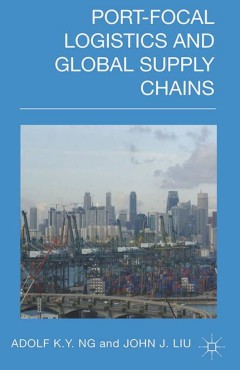
Port-Focal Logistics and Global Supply Chains
This book explores the intersection of two trends in the port sector that have occupied researchers in recent years: the port's progressively interventionist role in the hinterland and its increasing importance as a node within supply chains. These trends are set against the backdrop of fierce port competition as the increasing size of modern container vessels drives ports to make huge investm…
- Edisi
- -
- ISBN/ISSN
- 978-1-349-44539-4
- Deskripsi Fisik
- -
- Judul Seri
- -
- No. Panggil
- TXT PO ADO p
Port-Focal Logistics and Global Supply Chains
- Edisi
- -
- ISBN/ISSN
- 978–1–137–27368–0
- Deskripsi Fisik
- xx, 244 p
- Judul Seri
- -
- No. Panggil
- TXT PO ADO p
- Edisi
- -
- ISBN/ISSN
- 978–1–137–27368–0
- Deskripsi Fisik
- xx, 244 p
- Judul Seri
- -
- No. Panggil
- TXT PO ADO p
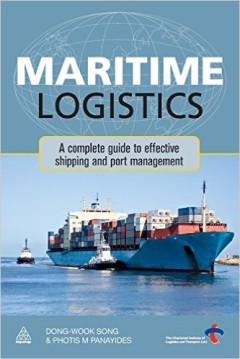
Maritime Logistics: A Complete Guide to Effective Shipping and Port Management
Current globalization and borderless operations in manufacturing are creating a greater demand for international transportation and supply chain logistics. Maritime (shipping and ports) is one of the key components in this business pattern. It is now estimated that approximately 90% of global trading freight moves by ship. As this trade increases it is becoming more important to have a clear un…
- Edisi
- -
- ISBN/ISSN
- 978-0-7494-6369-4
- Deskripsi Fisik
- xiv, 326p. ; 24cm.
- Judul Seri
- -
- No. Panggil
- LO SON m

Improving value chain flexibility and adaptability in build-to-order environm…
Given volatile markets, the ability to quickly act is fundamental for companies – in regard to the internal production and to external supply flows in the value network. Related flexibility and adaptability concepts are vague and contradictory. Managerial methods either imply a generic application level or a narrow focus. Thus, the purpose of this paper is to develop a three-step approach to …
- Edisi
- Vol. 42 No. 4, 2012
- ISBN/ISSN
- -
- Deskripsi Fisik
- 22 p.
- Judul Seri
- International Journal of Physical Distribution & Logistics Management
- No. Panggil
- ATC LO ENG i

Increasing customer value and decreasing distribution costs with merge-in-tra…
A broad product assortment is usually valued highly by customers. However, holding a great number of product variants in inventory increases the costs of a supplier. It is possible to reduce need for warehousing with direct deliveries from manufacturing units, but customer value is reduced when orders are received on several shipments. Merge-in-transit is a distribution method in which goods sh…
- Edisi
- Vol. 33 No. 2, 2003
- ISBN/ISSN
- -
- Deskripsi Fisik
- 19 p.
- Judul Seri
- International Journal of Physical Distribution & Logistics Management
- No. Panggil
- ATC LO HOL i

Establishing a framework for effective materials logistics management
The “Law of Industrial Dynamics” is a well‐known phenomenon which leads to significant swings in demand as orders are passed down along a supply chain. Large fluctuations in demand result for the manufacturer leading to policies which counteract the objectives of materials logistics management which are to reduce inventories while maintaining strategic stocks, improve product quality, min…
- Edisi
- Vol. 5 Issue: 1, pp.81-88
- ISBN/ISSN
- -
- Deskripsi Fisik
- 10 p.
- Judul Seri
- The International Journal of Logistics Management
- No. Panggil
- ATC LO NAI e

Speeding up the progress curve towards effective supply chain management
Introduces a supply chain “health check” procedure successfully applied in the European automotive sector and presents the results for the analysis of 20 trans‐European value streams covering a wide range of first and second tier suppliers. The health check procedure is activated via a quick scan methodology (QSM) requiring execution by a multi‐disciplinary team working on‐site. The d…
- Edisi
- Vol. 5 Issue: 3, pp.122-130
- ISBN/ISSN
- -
- Deskripsi Fisik
- 12 p.
- Judul Seri
- Supply Chain Management: An International Journal
- No. Panggil
- ATC LO DIS s
 Karya Umum
Karya Umum  Filsafat
Filsafat  Agama
Agama  Ilmu-ilmu Sosial
Ilmu-ilmu Sosial  Bahasa
Bahasa  Ilmu-ilmu Murni
Ilmu-ilmu Murni  Ilmu-ilmu Terapan
Ilmu-ilmu Terapan  Kesenian, Hiburan, dan Olahraga
Kesenian, Hiburan, dan Olahraga  Kesusastraan
Kesusastraan  Geografi dan Sejarah
Geografi dan Sejarah